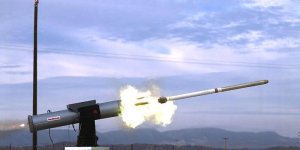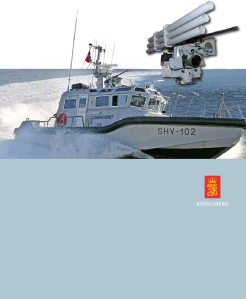Video: Hellfire launch from a 52 foot Combat Boat 90.
Previously we have talked about several guided weapons with potential for use by the Coast Guard for stopping small fast craft that might be used for a terrorist attack, while minimizing the chances of collateral damage. These included guided 70mm rockets (there are actually several different similar adaptations of the 70mm Hydra including, BAE’s APKWS, Lockheed’s DAGR, and Raytheon TALON), in addition to larger SeaGriffin, Hellfire, and Brimstone missiles, but we have not talked much about launchers, with minor exceptions.
Our friend at ThinkDefence recently did a post about the Brimstone missile, “Dual Mode Brimstone Greatest Hits,” and speculated on additional ways it might be used. He showed a number of launchers and I realized, perhaps it was time to show some of the alternatives with the purpose of showing that these systems are not that large, and would have relatively little impact on the ships.
In fact some of these launchers are quite small.
Photo: Kongsberg “SeaProtector“ gun mount with 70mm rocket launchers
Lockheed has a land based pedestal launcher that handles both Hellfire and 70mm rockets. For our purposes it would probably have to be “marineized” but the size looks reasonable.
Raytheon has demonstrated their version of the guided Hydra 70mm rocket using a standard rocket pod of the type commonly used on helicopters mounted on a remotely controlled weapon station.

Photo: Raytheon TALON 70mm guided rocket fired from LAU-68 launcher
Most of these launchers look to be like those used on aircraft. It is not clear that the weapons could be mounted and left for months or years until needed. The weapons might have to be stored elsewhere and mounted only when use is anticipated. On the other hand, the launcher used for the SeaGriffin as recently mounted on Navy Cyclone Class PCs looks to be suitable for long term storage.
We have heard that the Navy tested vertical launching the Hellfire on a 65 foot boat, simulating an LCS, and that they expect to mount vertically launched Hellfires on the LCS. Hopefully this will be a good option for cutters as well, with the capability of holding the missiles at the ready for long periods.


